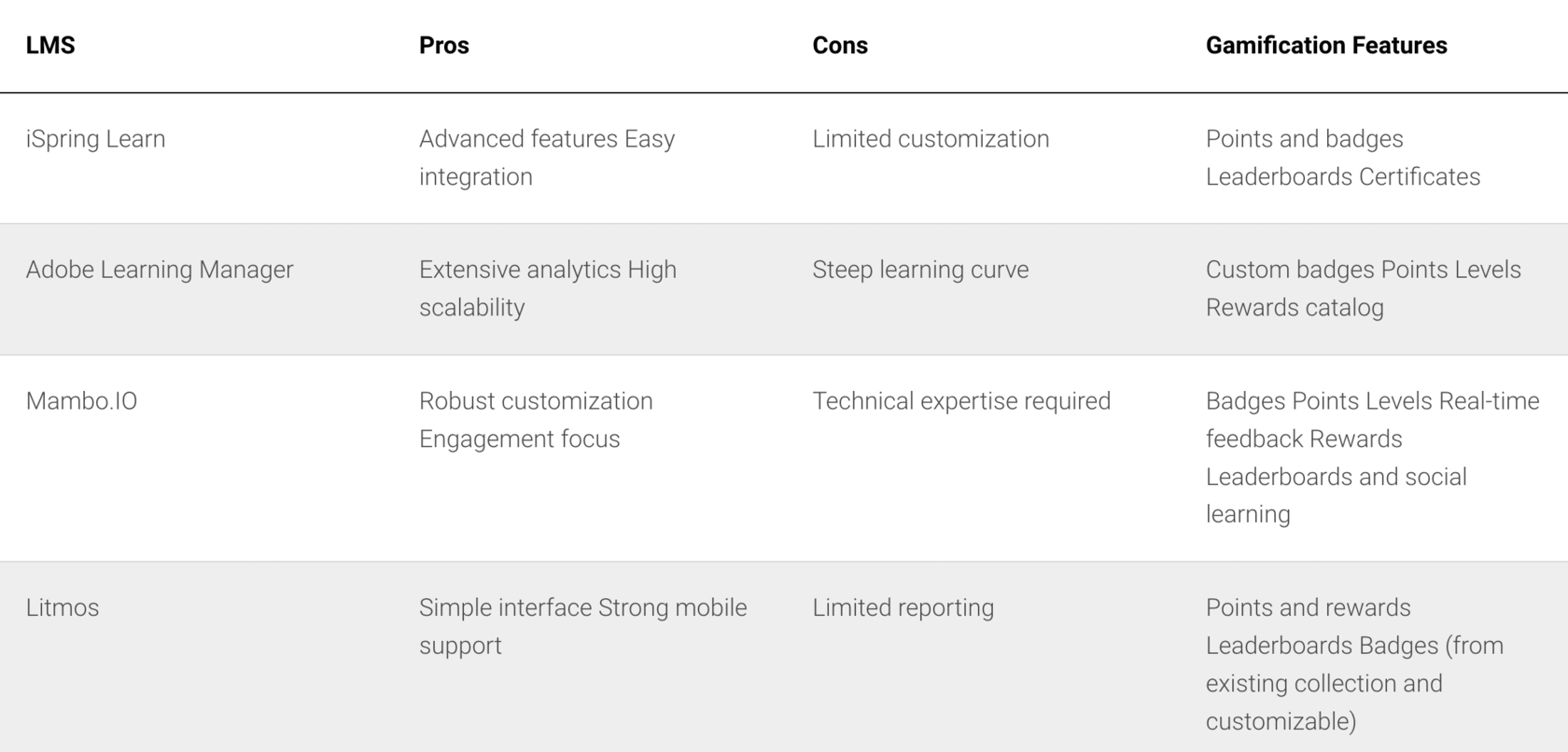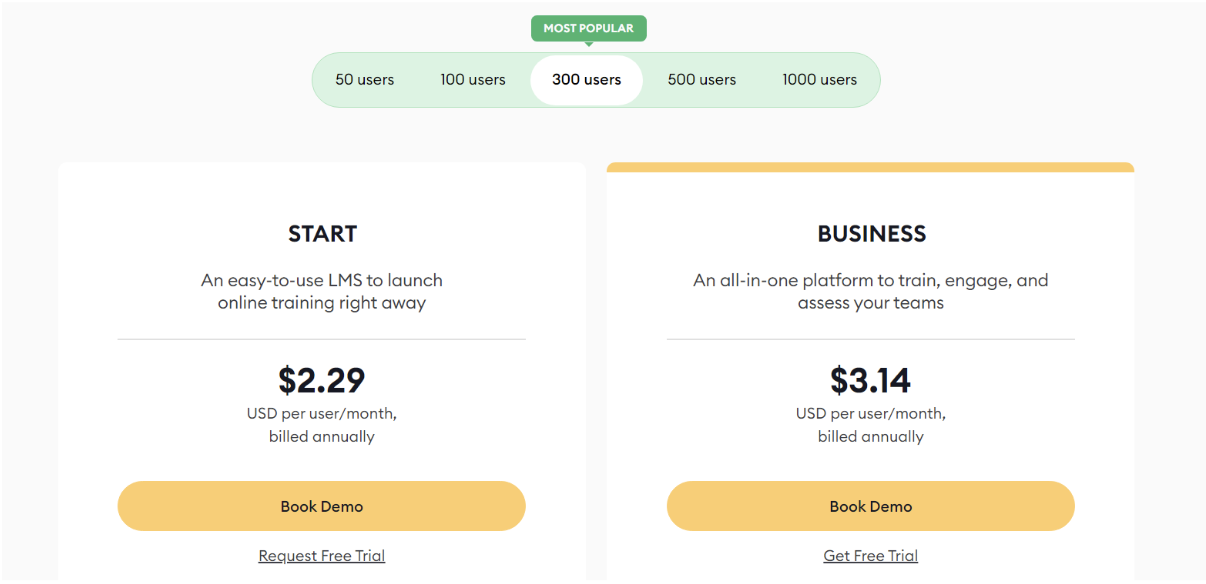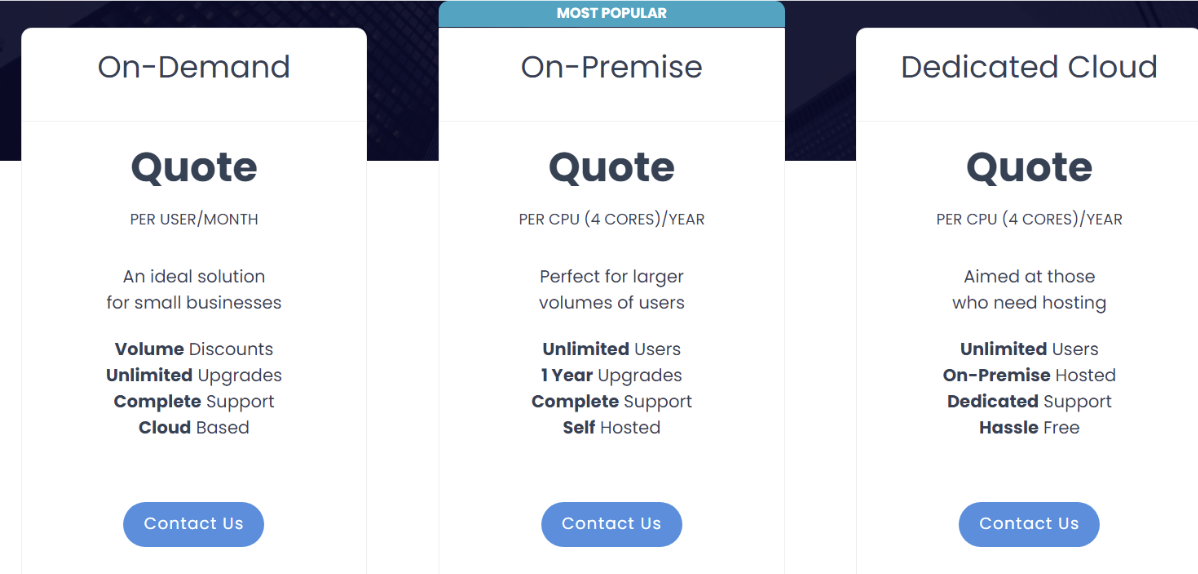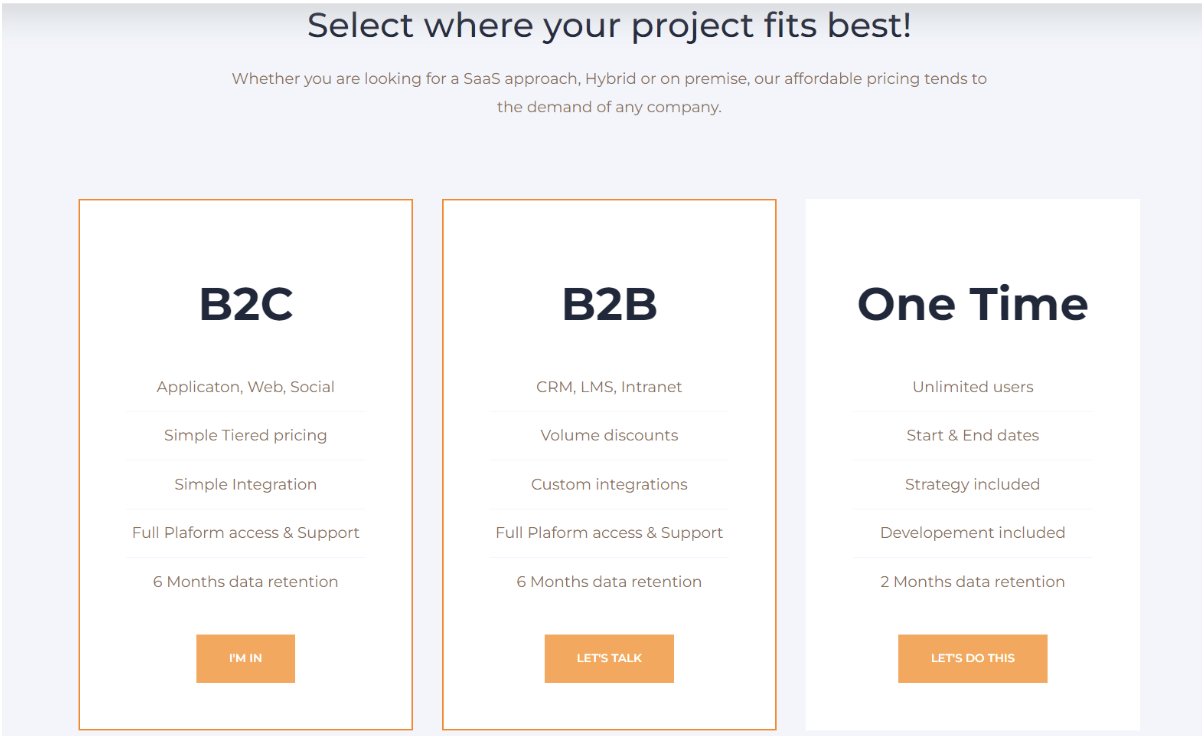Gamification LMS - Best Gamified Learning Management Systems
Gamified learning platforms are transforming education by blending learning management systems (LMSs) with engaging game design elements. These innovative platforms are more than mere repositories of online training content; they use game mechanics to motivate learners and make e-learning more interactive.
Understanding LMS gamification is crucial in today's digital learning landscape. It goes beyond simple game mechanics, aiming to create a comprehensive learning experience that keeps learners engaged and motivated. In this article, we’ll delve into gamification in LMSs, plus explain why it is important and what advantages it can bring to the educational and corporate environment. We'll also provide insights into the best gamified LMSs available, showcasing how they are leading the way in making the learning process both enjoyable and efficient.
What is Gamification in an LMS?
Gamification in a Learning Management System is an innovative approach that integrates gamified learning into educational and corporate training platforms. At its core, it involves incorporating game-like elements into a non-game learning context. This approach uses fun and motivating techniques, and applies them to the learning process to make it more engaging and productive.
The fundamental principles of gamification in LMSs include rewarding progress, offering fast feedback, and creating a sense of healthy competition and achievement among learners—all factors that can help keep learners interested and involved.
The fundamental principles of gamification in LMSs include rewarding progress, offering fast feedback, and creating a sense of healthy competition and achievement among learners—all factors that can help keep learners interested and involved.
In practice, gamification elements in LMSs use game mechanics like points, badges, and leaderboards to encourage and motivate learners. These features transform the learning experience, making it more interactive. In online proctoring scenarios, such components play a vital role in keeping learners focused despite the absence of a traditional classroom setting. The main aim is to foster a more immersive and engaging learning environment, which is particularly important in self-paced and remote learning scenarios.
Gamification vs. Game-Based Learning
Gamification and game-based learning are often confused in the realm of digital education. Gamification involves incorporating game mechanics into non-game contexts, such as learning management systems (LMSs). For example, earning points for completing a module is a gamification technique in an online course.
On the other hand, game-based learning is the use of actual video games or game-like environments for educational purposes. Here, the learning content is embedded within the game itself, making the game and the learning experience the same. An example is a simulation game where players learn history by navigating through historical events. Unlike gamification, which adds game elements to traditional learning, game-based learning is built entirely around the game structure.
On the other hand, game-based learning is the use of actual video games or game-like environments for educational purposes. Here, the learning content is embedded within the game itself, making the game and the learning experience the same. An example is a simulation game where players learn history by navigating through historical events. Unlike gamification, which adds game elements to traditional learning, game-based learning is built entirely around the game structure.
Benefits of Gamification in Education
Gamification in education is revolutionizing the way we learn, transforming traditional methods into dynamic and interactive experiences. Let’s examine how gamified learning can improve the study process and its results.
Increased Engagement
Gamification enhances user engagement by making education more enjoyable and interactive. A study conducted at the School of Electrical and Computer Engineering at the National Technical University of Athens, Greece, has shown that gamified learning can improve student performance by 89.45% compared to lecture-based training. By turning learning into a game-like experience, students are more likely to engage with the material, participate actively, and enjoy the process.
Improved Learning Outcomes
Gamified learning platforms have been linked to better learning results. The Federation of American Scientists found out that students can remember up to 90% of what they studied using gamification features, compared to only 20% of what they heard at a lecture.
Motivation and Progress Tracking
Gamification motivates learners through elements like leaderboards, badges, and points. These features encourage learners to set goals, track their progress, and achieve milestones, making learning more goal-oriented.
Personalized Learning Paths
Gamified LMS platforms enable personalized learning paths, adapting to individual preferences and traits. This adaptability ensures that each learner has a unique experience tailored to their learning style and pace. In corporate settings, this means that employees can engage in training that is most relevant to their roles, making learning more applicable to their jobs.
Best Gamified Learning Management Systems
Gamified learning management systems have become increasingly popular for enhancing online training content through engaging, interactive, and rewarding learning experiences. Here, we explore five notable gamified LMS platforms, each offering unique features to cater to various learning needs.


iSpring
iSpring Learn is a versatile LMS offering robust gamification features for diverse training modules. It's unique for its user-friendly interface and quick content deployment, making it ideal for businesses seeking an efficient and engaging LMS solution. Its gamification elements include, but are not limited to:
Pros:
Cons:
iSpring Learn offers a flexible pricing model, which typically starts at a base price for a specific number of users, with costs increasing as more users are added.
- Points and badges for completing courses and achieving learning milestones.
- Leaderboards displaying user progress.
- Certificates for course completion, adding more tangible rewards to the learning process.
Pros:
- Advanced Features. Offers a wide array of functionalities for varied training needs.
- Easy Integration. iSpring seamlessly integrates with multiple third-party tools and systems.
Cons:
- Limited Customization. This platform has fewer options for personalizing the learning experience.
iSpring Learn offers a flexible pricing model, which typically starts at a base price for a specific number of users, with costs increasing as more users are added.

Adobe Learning Manager
Adobe Learning Manager stands out for its ability to handle complex learning programs. It offers robust features, including advanced analytics and the flexibility to scale, making it a top choice for large enterprises. Among its top-notch gamification elements are:
Pros:
Cons:
Adobe Learning Manager’s pricing is tailored to the scale and complexity of the training program. As this platform is geared towards larger organizations, its pricing often reflects enterprise-level solutions and may include setup fees and annual licensing.
- Custom badges for specific achievements.
- Points given for particular task completion and levels that users can achieve based on their learning progress.
- A rewards catalog where points can be exchanged for rewards, enhancing motivation.
Pros:
- Extensive Analytics. Adobe Learning Manager comes with deep insights into learner performance and engagement.
- High Scalability. It is ideal for large organizations with extensive training requirements.
Cons:
- Steep Learning Curve. This learning management system requires time to master its extensive features.
Adobe Learning Manager’s pricing is tailored to the scale and complexity of the training program. As this platform is geared towards larger organizations, its pricing often reflects enterprise-level solutions and may include setup fees and annual licensing.

Mambo.IO
Mambo.IO is another well-known learning management system which is distinctive for its highly customizable gamification approach. This platform is tailored to organizations seeking to engage learners through personalized and interactive gamified experiences. Its core gamification features include:
Pros:
Cons:
Mambo.IO’s pricing largely depends on the customization level and deployment scale.
- Badges, points, and levels tailored to specific learning objectives.
- Real-time feedback and rewards to keep users engaged and motivated.
- Social recognition tools like leaderboards and social sharing to foster a community learning environment.
Pros:
- Robust Customization. The platform includes customizable dashboards with various data sets, chart types, and comparison tools.
- Engagement Focus. Mambo.IO boosts engagement by segmenting and personalizing user interactions. Some of its useful features include real-time feedback with notifications, peer-to-peer recognition, and filtering options for streams to show specific types of activities or user groups.
Cons:
- Technical Expertise Required. This LMS demands technical skills for setup and customization.
Mambo.IO’s pricing largely depends on the customization level and deployment scale.

Litmos
Litmos is a gamification LMS which is renowned for its simplicity and ease of use. It's particularly appealing to small and medium-sized businesses and organizations looking for a straightforward, no-fuss LMS with strong mobile support. Its gamification features include:
Pros:
Cons:
Litmos uses a tiered subscription model, with basic plans for smaller teams and more advanced options for larger organizations.
- Points and rewards for course completions and other achievements.
- Leaderboards to encourage competition and track progress.
- Badges (from existing collection and customizable) to recognize and reward learner accomplishments.
Pros:
- Simple Interface. Litmos stands out with a user-friendly interface, especially for LMS beginners.
- Strong Mobile Support. This learning platform offers effective functionality across mobile devices.
Cons:
- Limited Reporting. Less comprehensive reporting features.
Litmos uses a tiered subscription model, with basic plans for smaller teams and more advanced options for larger organizations.

Funifier
Funifier LMS gamification solutions offer a highly flexible environment with a broad spectrum of gamification tools. Some of them include:
Pros:
Cons:
Funifier offers a range of subscription options, which can vary based on the number of users and the extent of gamification tools required.
- Custom badges, quests, progress bars, and challenges.
- Interactive scenarios that incorporate game elements into the learning process.
- Virtual currency as a reward mechanism.
Pros:
- Diverse Gamification Tools. This gamification LMS has many elements to enhance the training process and improve learner engagement.
- Good System Integration. Funifier easily integrates with existing systems.
Cons:
- Complex for New Users. It is potentially overwhelming for beginners.
Funifier offers a range of subscription options, which can vary based on the number of users and the extent of gamification tools required.

Implementing Gamification in LMS
Gamification Strategies
Below are several key strategies that can be applied in a gamification LMS.
Points System
Points are fundamental to gamified learning, providing instant feedback and a sense of accomplishment. In a learning management system, points can be awarded for completing modules, participating in discussions, or achieving high scores in quizzes.
Badges
Badges serve as virtual rewards recognizing specific achievements and milestones within an online course. They can be customized to reflect various levels of achievement and encourage learners to explore different aspects of the course. Training managers can use badges to acknowledge and motivate learners, enhancing their sense of progress and achievement.
Leaderboards
Leaderboards rank learners based on their performance, fostering a competitive environment. They can display top scores, most active participants, or those who have completed the course the quickest.
Narrative-Driven Scenarios
Embedding learning material within a narrative context makes the experience more immersive and relatable. Scenarios can include role-playing elements, branching stories, or situational challenges relevant to the e-learning industry. This approach helps contextualize the training material, making it more engaging and memorable.
Choosing the Right Gamification Tools
The right choice of gamification LMS will elevate your learning initiatives, making them more effective and enjoyable for learners. Here are some parameters to consider when choosing the most suitable gamified learning management system.
- Integration. The ideal tool should integrate smoothly with your LMS, enriching the curriculum without overshadowing the core learning content.
- Customization and Flexibility. Select a tool that offers ample customization options. This flexibility allows you to tailor the gamification experience to suit different learner needs.
- User-Friendly Interface. The tool should be intuitive and easy to navigate, and should not add complexity to the learning process.
- Tracking and Analytics. Analytics capabilities are essential for monitoring learner engagement and progress. A tool with detailed analytics helps fine-tune learning strategies and improve overall learning outcomes.
Designing Effective Gamified Courses
Here are some key tips and best practices for educators to create compelling gamified learning experiences.
- Define Clear Learning Objectives. Align game elements with learning goals to ensure the gamification supports the educational content effectively.
- Create Meaningful Challenges. Design challenges that are relevant and progressively increase in difficulty.
- Balance Difficulty Levels. Cater to different skill levels by offering varied challenges to prevent learner frustration.
- Provide Timely Feedback. Immediate, constructive feedback is crucial. It helps learners understand their progress and areas for improvement.
- Regularly Evaluate and Adapt. Continuously assess the course's effectiveness and be ready to make adjustments based on learner feedback and performance data.
Gamification Success Stories
Various educational institutions have shown significant results when applying gamified learning. Schools and colleges integrating gamification techniques within their learning management systems have witnessed a significant uptick in student engagement and motivation. According to this study, around 68% of students feel more involved in learning when using gamified techniques rather than traditional learning materials.
The corporate world has also embraced gamification with open arms. A survey by Talent LMS reveals a striking statistic: 89% of individuals reported increased productivity when their work was gamified. One of the standout cases of integrating gamification learning into corporate activities is the case of Domino’s Pizza, a global pizza chain giant. In 2015, Domino’s revolutionized its recruitment and upskilling processes by launching “Pizza Hero”, a mobile app with gamified elements like leaderboards and rewards. This strategy paid off immensely, leading to a 30% surge in sales. The app's success story exemplifies how effectively gamification can be leveraged in various domains.
The corporate world has also embraced gamification with open arms. A survey by Talent LMS reveals a striking statistic: 89% of individuals reported increased productivity when their work was gamified. One of the standout cases of integrating gamification learning into corporate activities is the case of Domino’s Pizza, a global pizza chain giant. In 2015, Domino’s revolutionized its recruitment and upskilling processes by launching “Pizza Hero”, a mobile app with gamified elements like leaderboards and rewards. This strategy paid off immensely, leading to a 30% surge in sales. The app's success story exemplifies how effectively gamification can be leveraged in various domains.
Challenges and Considerations for Gamification in LMSs
Implementing gamification in learning management systems can revolutionize education, yet it also comes with some challenges.
One primary concern is aligning gamification LMS strategies with diverse learner preferences. Not all students are ready for game-based learning. As such, it's crucial to balance traditional and gamified content, offering varied learning pathways to align with different learning styles.
Another issue is the potential for gamification to become a distraction. Elements designed to engage – like badges, points, or leaderboards – can sometimes overshadow the core educational objectives. To mitigate this, it's essential to integrate these elements to reinforce learning goals, not detract from them.
Assessment methods in gamified courses also require careful consideration. Traditional testing might not effectively measure the skills and knowledge acquired through an LMS with gamification. Thus, it’s necessary to develop innovative assessment strategies that align with the interactive and dynamic nature of gamified learning.
The most important point when addressing these challenges is a delicate balance. By considering these factors, educators and institutions can harness the full potential of gamification in LMSs, creating engaging, effective, and inclusive learning environments.
One primary concern is aligning gamification LMS strategies with diverse learner preferences. Not all students are ready for game-based learning. As such, it's crucial to balance traditional and gamified content, offering varied learning pathways to align with different learning styles.
Another issue is the potential for gamification to become a distraction. Elements designed to engage – like badges, points, or leaderboards – can sometimes overshadow the core educational objectives. To mitigate this, it's essential to integrate these elements to reinforce learning goals, not detract from them.
Assessment methods in gamified courses also require careful consideration. Traditional testing might not effectively measure the skills and knowledge acquired through an LMS with gamification. Thus, it’s necessary to develop innovative assessment strategies that align with the interactive and dynamic nature of gamified learning.
The most important point when addressing these challenges is a delicate balance. By considering these factors, educators and institutions can harness the full potential of gamification in LMSs, creating engaging, effective, and inclusive learning environments.
Future Trends in Gamification and LMSs
The landscape of gamification in learning management systems is rapidly evolving. Emerging trends are transforming LMS platforms, offering immersive and interactive learning experiences. Here are some examples:
These innovations are shaping the future of education, making learning more dynamic and tailored. They represent a shift towards more experiential and student-centered learning environments.
- Virtual Reality (VR) in a gamification LMS enables learners to engage in lifelike simulations.
- Artificial Intelligence (AI) gamification algorithms can personalize learning experiences, adapting challenges and rewards to individual learning styles and progress.
- Augmented Reality (AR) in a gamified LMS enables learners to visualize and interact with 3D models and simulations in their physical environment, enhancing understanding and engagement.
These innovations are shaping the future of education, making learning more dynamic and tailored. They represent a shift towards more experiential and student-centered learning environments.
Conclusion
Gamification in LMSs is the integration of game-like elements such as points, badges, leaderboards, and challenges into educational platforms. These elements transform traditional learning into a more engaging and interactive experience.
The significance of gamification in LMSs cannot be overstated. It represents a paradigm shift in education, catering to the preferences of a digital-savvy generation. By turning education into an interactive journey, gamification in LMSs bridges the gap between learning and playing, making it an indispensable tool in modern education.
The significance of gamification in LMSs cannot be overstated. It represents a paradigm shift in education, catering to the preferences of a digital-savvy generation. By turning education into an interactive journey, gamification in LMSs bridges the gap between learning and playing, making it an indispensable tool in modern education.
FAQ
What is gamification in an LMS?
A gamification LMS integrates game-like mechanics into learning platforms to enhance engagement and motivation. Gamification features may include points, levels, badges, etc. Gamified learning transforms traditional educational content into an interactive experience, boosting knowledge retention and participation through fun competitions and challenges.
What is an example of gamification in LMSs?
An example of LMS gamification is a sales training program where learners earn points and badges for completing modules and quizzes. Leaderboards and rewards for top performers encourage healthy competition and enhance workplace training effectiveness. In online educational courses, a gamified LMS can engage students in interactive quests and puzzles related to their curriculum.
What are gamification elements for LMSs?
Key gamification features for LMSs include points, badges, leaderboards, and progress tracking. These elements create a competitive environment, drive engagement, and facilitate gamified learning. They are essential in making learning processes more interactive and rewarding in a digital environment.


